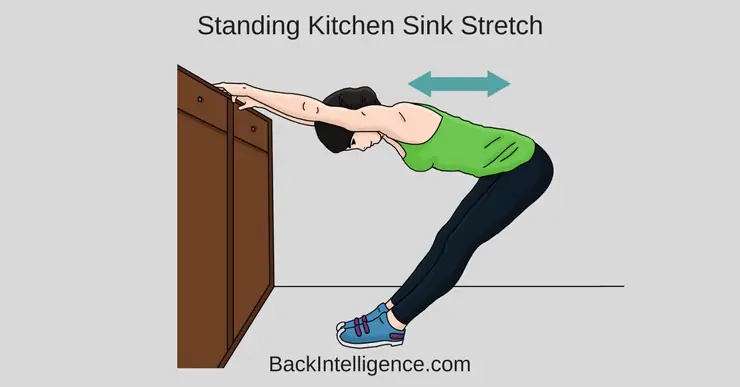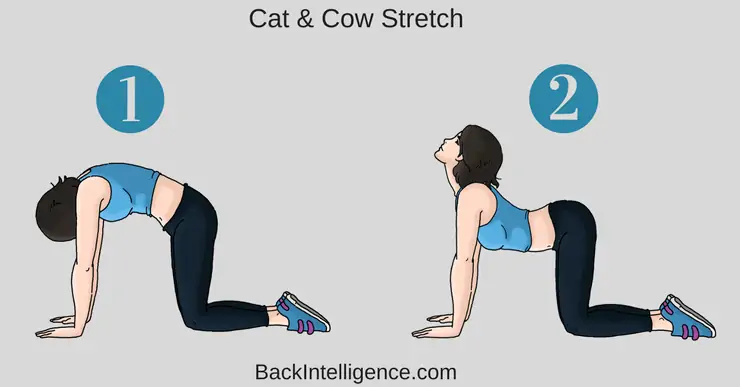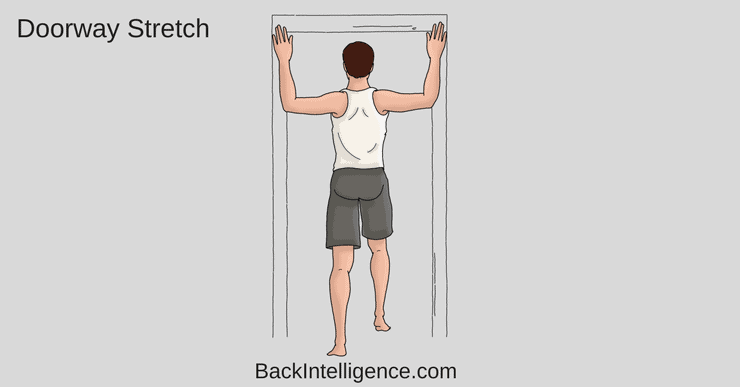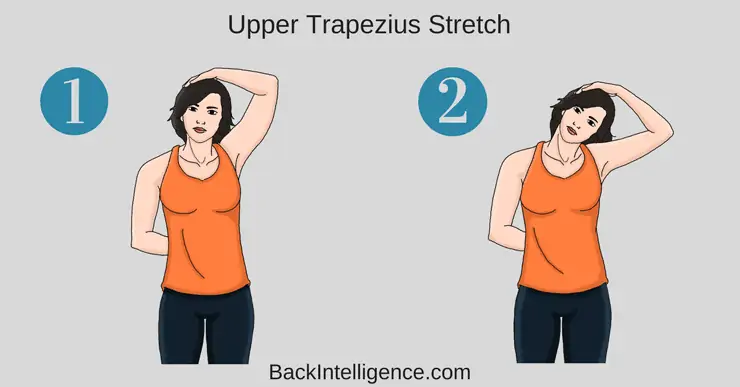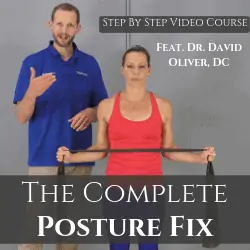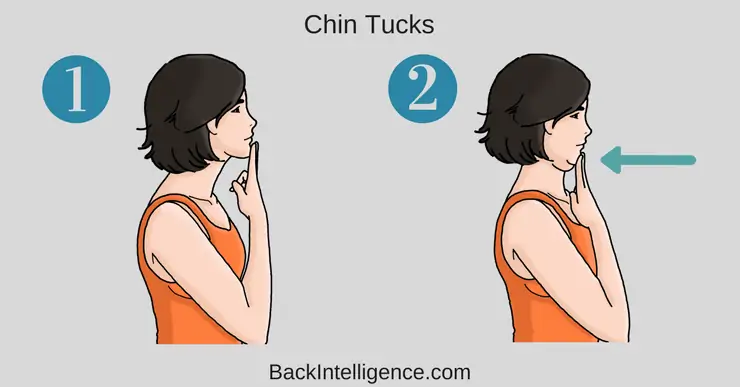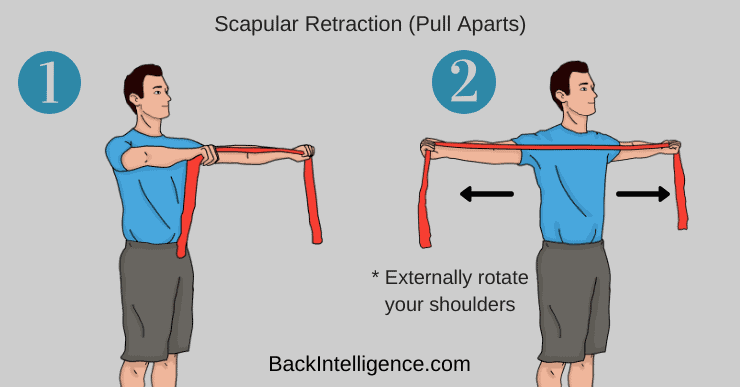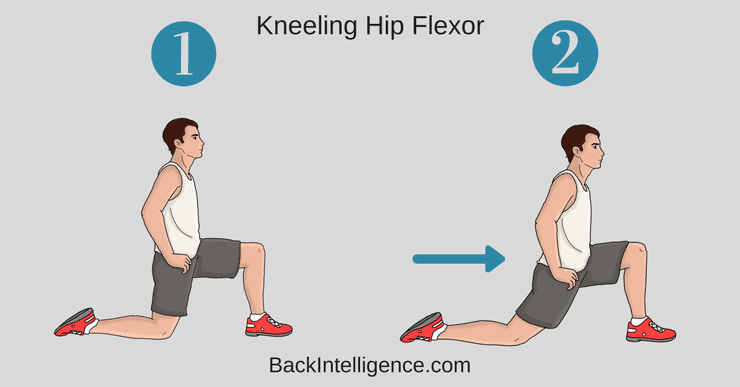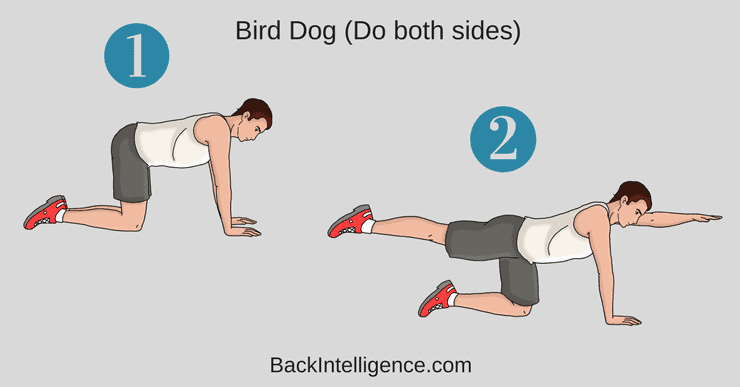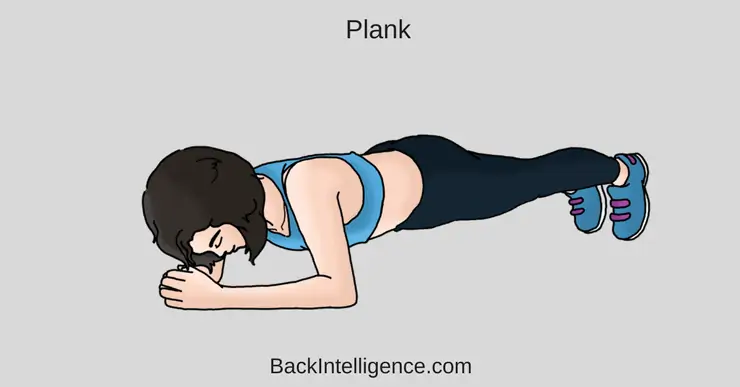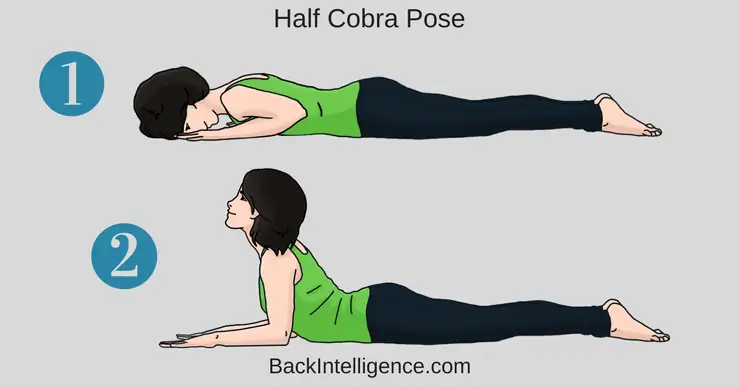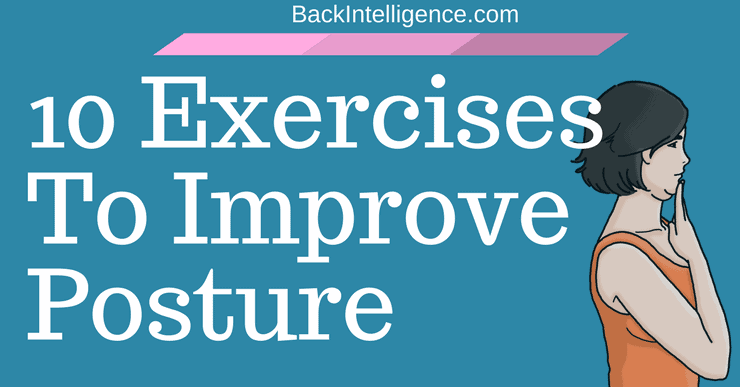
It is a known fact that most people sit for way too long. Not only that, but they tend to sit with bad posture…
The slouched shoulders, forward head posture, rounding of the back, or excessive arching of the low back.
Over time these bad postures cause aches and pains in your body. But the good news is that you can do simple exercises to correct your posture and manage your back pain.
The following posture exercises are arranged into 3 sections: Whole body posture exercises, Upper back/neck posture exercises, and lower back and core posture exercises. Please let us know in the comments below if these helped you.
Whole Body Posture Exercises (1-2):
The following 2 exercises are meant to decompress you spine.
Exercise #1: Decompression Using Standing Kitchen Sink
How to do it:
• Begin by finding a sturdy surface you can hold onto. I typically have my patients do this at the kitchen sink.
• While holding onto the surface, slowly lean back and completely straighten your elbows.
• At this point, you should be leaning all of your weight back behind you.
• Stay in this position for 20-30 seconds, take deep breaths, and try to relax into the position.
• Repeat 2-3x, as much as needed throughout the day.
Exercise #2: Cat & Cow (Use low range of motion)
The cat and cow is a great spine mobility exercise that you can do to help energize your low back muscles.
How to do it:
– Begin by kneeling on all fours with your hands positioned under your shoulders and your knees positioned directly below your hips.
– Exhale and arch your spine gently.
– Hold this position for 2 seconds.
– Inhale and tighten your core muscle while you round your back.
– Hold this position for 2 seconds.
– Aim for 10 repetitions.
Upper Back Posture Exercises (3-6):
These exercises are great for anyone experiencing bad upper back posture and/or pain.
Exercise #3: Doorway Stretch
Because the abs and chest get super tight during sitting, the doorway stretch will help loosen it up.
How to do it:
– Position your elbows and hands in line with a doorframe.
– Step through the door slowly, until you feel a stretch.
– Hold this end position for 15 to 20 seconds before returning to the starting position.
– Repeat this stretch 3 times.
Exercise #4: Upper Trapezius Stretch
This will stretch out the neck and upper back muscles (Scalene & Upper Trapezius) which can get very tight on individuals with this forward neck syndrome.
- Start either in a standing or seated position.
- Place one of your hands on the opposite side of your head and tuck the other hand behind your back.
- Now bring the head down towards your shoulder.
- Use the hand on top to press your head down – to get a deeper stretch (Not too hard).
- Hold for 20-30 seconds and do both sides
The Complete Posture Fix (With Dr. Oliver)
Fix your Rounded shoulders & Fwd Head posture, get out of pain and increase your mobility.
Learn More
Exercise #5: Neck Retraction (Chin tucks)
Targeted muscles: Upper cervical extensors and Suboccipital (Plus strengthening cervical flexors)
This exercise will activate and strengthen your deep cervical muscles (front of the neck muscles).
- Place 2 fingers at the bottom of your chin.
- Gently tuck your chin in and retract your head backwards. At the same time, use your fingers to keep the chin tucked in the entire time.
- Hold the end position for 3 to 5 seconds.
- Relax your neck for a moment (Let the neck come fwd).
- Aim for 2 to 3 sets of 10 repetitions.
** You should feel like the back of your neck is lengthening or “pulling up”, and there will be packing in front of your neck.
#6. Standing Pull Apart (Using Resistance Bands)
The last exercise of the series is focused on posture. This will help strengthen the muscles between your shoulder blades and on the back of your shoulders to ultimately allow you to have the strength to maintain proper posture.
How to Do It:
- Begin standing with a good posture
- Holding a resistance band (level of resistance you use depends on your individual strength level) with both hands, straighten your elbows and bring your arms out in front of you.
- While keeping your elbows locked, slowly move your arms out and back behind your body. You should feel the muscles between your shoulder blades contracting/squeezing.
- Only go out as far as comfortable. Some muscular discomfort (burning) is ok, but pain in the arms or neck is not.
- Avoid shrugging your shoulders toward your ears.
- Repeat 2×10, gradually increasing to 3×10.
- By the time you get to repetition number 8, 9, 10, this should be challenging. If it is not, increase the level of resistance on the band.
Lower Back & Core Posture Exercises (7-10):
Exercise #7: Kneeling Hip Flexor Stretch
This stretch helps to lengthen tightened hip flexors that are often seen in individuals with anterior pelvic tilt.
How to do it:
– Begin this stretch by kneeling on a soft surface.
– Bring your right leg in front and place your foot flat on the ground so that your knee is positioned over your ankle.
– Your left knee should remain in contact with the soft surface and should be bent at 90 degrees.
– Slowly slide your right foot forward a few inches while bracing your core.
– Squeeze your right gluteal muscles and shift your hips forward.
– Your left knee should now be bent slightly more than 90 degrees.
– Hold the end position for 10 seconds.
– Aim for 10 repetitions of this stretch and perform it on both sides.
Exercise #8: Bird Dog
This is a great exercise to improve core strength and lumbar back muscles.
How to do it:
– Begin on your hands and knees, with your hands positioned under your shoulders and knees positioned under your hips.
– Brace (contract) your core as hard as you can before beginning any movement.
– While bracing your core, raise your left arm and reach it forwards until it is aligned with your torso; at the same time, kick your right leg backwards until is it aligned with your torso.
– It’s important to not arch your low back as you do this.
– Hold this position for 2-3 seconds before slowly returning to the starting position.
– Repeat with your right arm and left leg.
– Alternate sides for 10 repetitions.
** Only extend your arm and leg to where it’s comfortable and don’t arch your low back.
Exercise #9: Plank
This exercise is ideal for strengthening both your deep core and gluteal muscles.
How to do it:
Begin lying on your stomach with your forearms against the mat.
– Engage your core and lift your body so that you are resting on your forearms and toes.
– Ensure that your spine is in a neutral spinal position (not sagging in low back, or lifting butt in the air).
– Hold the plank position for 20-30 sec, Then lower down to floor.
– Aim for 2 to 5 repetitions of this exercise.
** Ensure to keep your back straight throughout the entire exercise.
Exercise #10: Half Cobra Pose
The Half Cobra pose is a great stretch for the low back and to reverse most people’s slouched shoulders posture.
How to do it:
● Begin this exercise by lying on your stomach (prone position) and slowly prop yourself up on your elbows while keeping your hips in contact with the floor.
● Hold the prop-up position for 10-15 seconds before returning to the prone position (lying face down).
● Gradually increase to holding the end position for 30 seconds. Aim for 10 repetitions of this stretch.
** Initially, you may not be able to tolerate this position very well, so make sure you start slowly and carefully.
2 More Important Things:
1. Add self massage techniques into your routine. By using a foam roller or massage ball, you can really dig into the specific muscles that may be too tight or overactive.
2. You need to be aware of your posture through out your day, so that you can fix your posture for the long term, and live a pain free life. Check out our 10 tips for proper sitting posture.
Learn More
Related:
Fix Pain between shoulder blades
How to get rid of neck pain
forward head posture exercises
Causes of poor posture
Corrective Exercise Specialist (NASM-CES), Certified Personal Trainer (NASM-CPT), Professional Dancer
As a long time back sufferer Leon found unique methods to alleviate his pain using natural methods including self massage, exercise/stretching and postural habits. He founded Backintelligence.com to empower others to fix their postures and ease their back pain from home.
